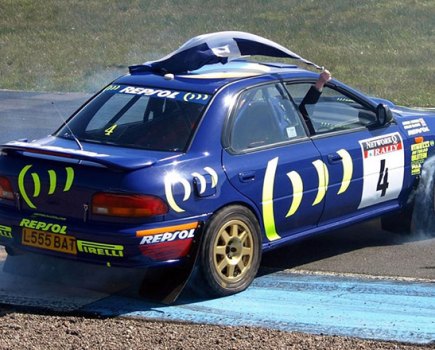Earlier this month a man from Redditch in Worcestershire was taken to hospital with burns to his face after a fire broke out in his garage while he was working on a classic car. As classic car enthusiasts we’ve all heard our share of horror stories when it comes to repairs, which have resulted in someone’s friend or family member being injured (or worse). However, these sorts of tales don’t always act as the deterrent that they should and by cutting a corner here or there it’s all too easy to find yourself in a situation that puts your safety at risk while servicing, repairing, or otherwise looking after your pride and joy.
It’s for this reason, in addition to this being the time of year when many enthusiasts are garage-bound, tackling those essential tasks before they look to make the most of driving their cars over the spring/summer months, that we’ve decided to outline how to prevent some of the most common workshop accidents.
PROPERLY SUPPORTING YOUR CLASSIC
When you come to work underneath your classic car you’ll find yourself working underneath a potentially lethal weight. However, because so many tasks involve you crawling beneath your car it’s easy to become complacent.
The first precaution to outline is to ensure that axle stands are being used on a hard, level surface (concrete for example). Soft ground is a no-no (gravel driveways for example) and working on a slope is just as bad. Next, make sure that each stand is securely located under a strong point on the vehicle; consult the vehicle manufacturer’s handbook when in doubt. Finally, never ever work beneath a vehicle that is supported by car jacks alone; use a single pair of axle stands and ensure that the wheels which aren’t off the ground are suitably choked. It’s also worth pointing out that you should never crawl beneath a vehicle fitted with air suspension unless it is properly supported.
WELDING AND FIRE RISKS
We won’t get into the skills involved in welding here, but as many of you will know already preparation is the key to clean, splatter-free welds. The same can be said in terms of safety; before welding, strip out any interior trim (including hidden sound deadening and rust prevention waxes) from the area being welded. The same applies to tyres or anything else that might be lying around the workshop – remove them if they’re in your working area. Also, prevent heat, sparks and hot splatters from landing on the welder itself.
It should go without saying, but you should never weld anything that has been used to store petrol or any other flammable liquid. According to the government’s Health and Safety Executive, there are around 170,000 people involved in the motor vehicle repair trade, 8000 of which have been involved in accident s in the past five years. Sadly, a common reason for such injuries was a person using a propane torch to cut the lid from the top of an empty oil drum.
As a precaution it’s a good idea to have a fire extinguisher handy, but make sure you have the correct example for the type of fire you wish to put out. Dry powder extinguishers are recommended for use in the garage as they’re safe for use on both flammable liquids and electrics – look for an A, B, and C class rating on any extinguisher you buy to ensure you’re fully protected.
USING TOOLS PROPERLY
Obviously it’s vital to know which end of a tool is which, but what we’re actually referring to here is making sure that whether it’s a hammer, trolley jack, or screwdriver that you do not exceed its working range. This applies to the aforementioned axle stands too.
A lot of this is common sense and most likely information you’ll know already. However, there’s certainly no harm in being reminded about good working practices – especially if it helps to avoid you being involved in a serious accident.
All of the above advice comes courtesy of the government’s Heath and Safety Executive website (www.hse.gov.uk), which is the same information that is circulated to commercial workshops and garages across Britain.





